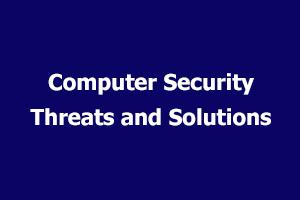Cybercrime is an act performed by highly trained computer professionals or hackers to illegally browse or steal an individual’s or an organization’s data. Not even steal or browse, in some cases hackers can even delete all the data with malicious intent.
Examples of Cyber Crime:
- Copyright Violation: To use someone’s copyrighted data without permission.
- Decoding/Deciphering someone’s code to protect data.
- Hacking, Threatening a person or blackmailing them.
- Setting up the domain of another person/company for the sole intention of selling it to them later at a good price.
- Creating/Using malicious code/virus to harm someone.
- DDoS: Overloading a system with so many requests so it can not serve normal requests.
- Releasing/ Publishing someone’s data on the internet without their permission.
- Manipulating data.
- Pretending to be someone else.
- Buy Illegal products/Drugs
- Stealing Information/Product developed by another Person/Company.
- Phishing.
- Using software that was not purchased legally.
- Spoofing: Deceiving system into thinking you’re not you’re pretending to be.
- Using Unauthorised access using VPNs and other software
Solutions to Computer Security Threats:
- Install Anti-Virus: Make sure you have installed an active anti-virus on your computer/servers. If someone is using a remote control to this device, make sure the personal system should also have an antivirus installed.
- Update Antivirus regularly to make sure that the system is safe.
- Firewall to protect the network: Make sure you have a firewall to protect your computer from unwanted viruses hidden in emails, Portable storage devices, etc.
- Filter Email traffic: Certain file types are most commonly used to spread viruses on systems like .EXE, COM, SCR, etc
- Ensure that all the users know not to open unexpected attachments from emails.
- Scan all the downloads before using.
- Do not run programs downloaded from unknown sources. Using a licensed software/Program can reduce the risk of compromising your system with viruses.
- Make regular backups of important files to ensure that you have a copy of the data in case your computer is infected with any virus. For added security, keep the backups offsite.
- Develop an information security policy and make sure all the users are made aware of their responsibilities.
- Monitor logs and systems regularly to ensure that there is no action made that can compromise the security of data.
- Develop an incident response plan which outlines the responsibility of relevant persons/parties in the event of security breaches. The worst time to develop such a plan is always in between a security breach.
- Restrict end-user access to the system and make sure no one other than administration can access the workstation/servers.
Cyber Criminals pose a constant threat to every business so it is necessary to make such arrangements to secure the workplace and computers.
Knowledge of .NET is quite rewarding in the IT industry. If you have got some skills in the .NET framework then a .NET certification from StudySection can prove to be a good attachment with your resume. You can go for a foundation level certificate as well as an advanced level certificate in the .NET framework.




